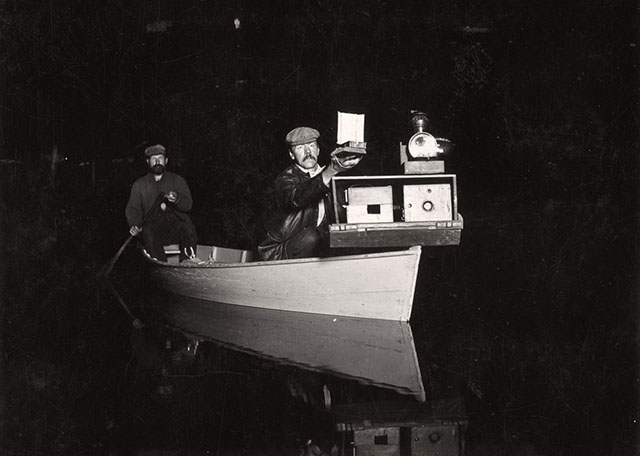

In 1888, a magazine for distinguished businessmen, explorers, scientists and scholars was founded: the National Geographic. This magazine wasn’t exactly what it is today though, all those stunning photographs were once horribly criticized.
When the first wildlife photographs taken by George Shiras III were published in July 1906, National Society Board Members were outraged, so much so that it caused a few of them to “resign in disgust.” What was their disgust? That such a high-quality magazine was “turning into a ‘picture book.'”
[REWIND: Archive Of Photographs From Depression Era, Easily Searchable]
Shiras, a lawyer and politician, was also one of the first pioneers of flash photography, not only for the equipment, but for the methods he used.

To photograph wildlife in the dark, Shiras would either: float on a boat in complete silence and darkness, and as soon as he heard any type of noise he would point his camera in that direction and shoot, or he would use a custom-built camera-trap system with trip wire – when animals would come grab the bait, they would set-off the camera and flash-gun.
The flash that Shiras used was so powerful, that it would oftentimes not only blind the animals temporarily, but it would blind Shiras as well.

Things worked out pretty well for George Shiras in the long-haul – in 1911, he was named into the Board of Managers for National Geographic. President Theodore Roosevelt also backed him up in his conservation efforts advocating “camera hunting” as the alternative to gun hunting wildlife.
Can you imagine National Geographic without its incredible collection of photographs? I certainly can’t!






CREDIT: Images, courtesy of National Geographic Archives.
[via] Peta Pixel




Get Connected!